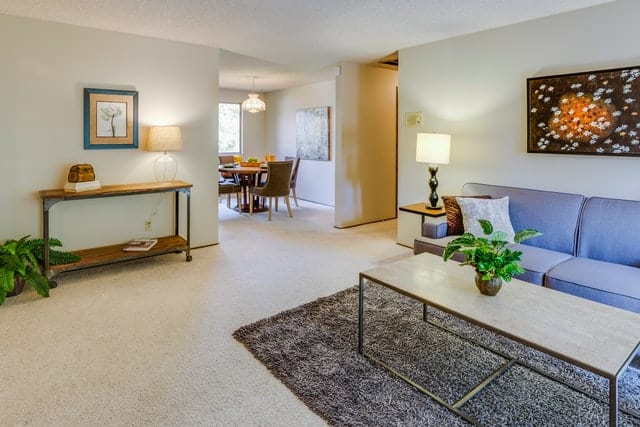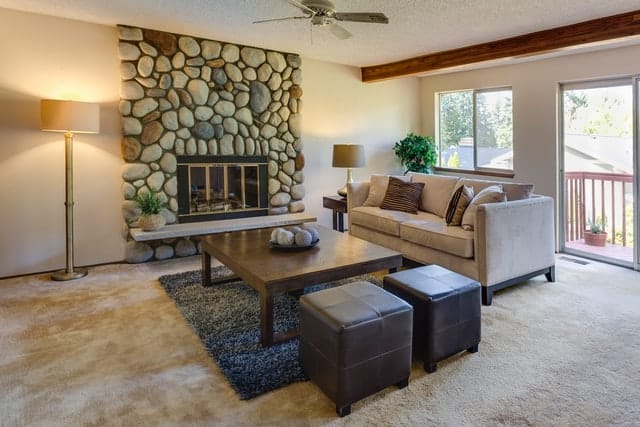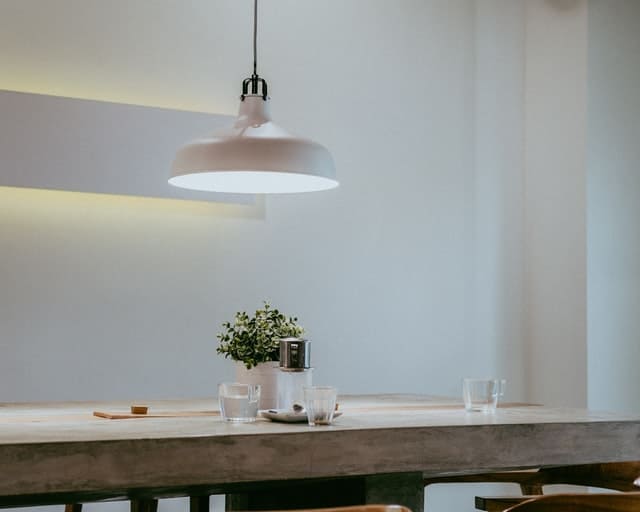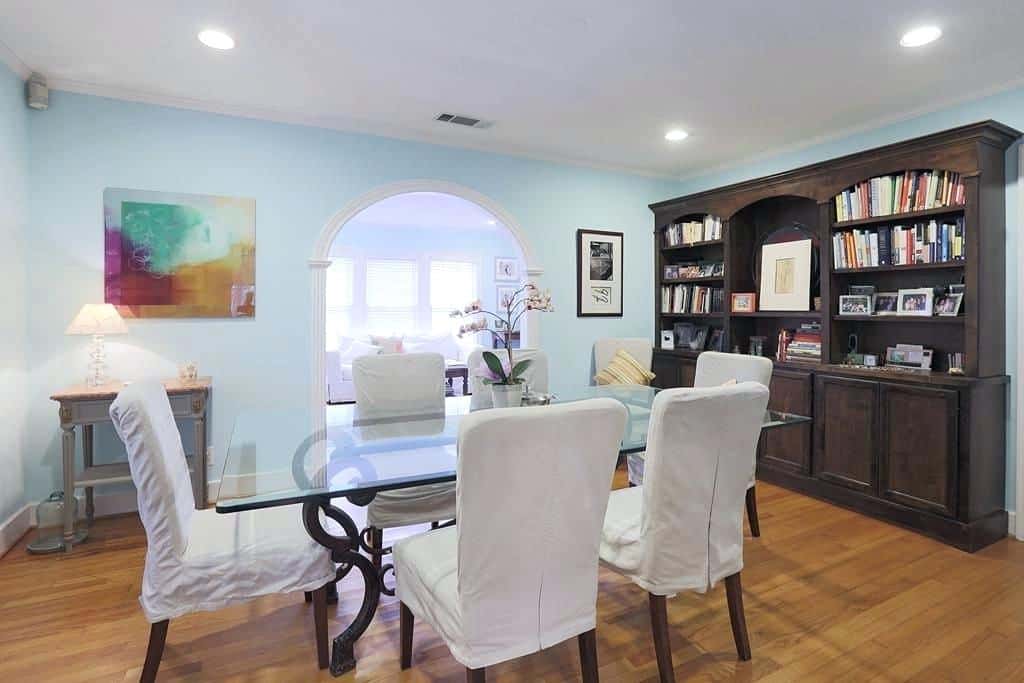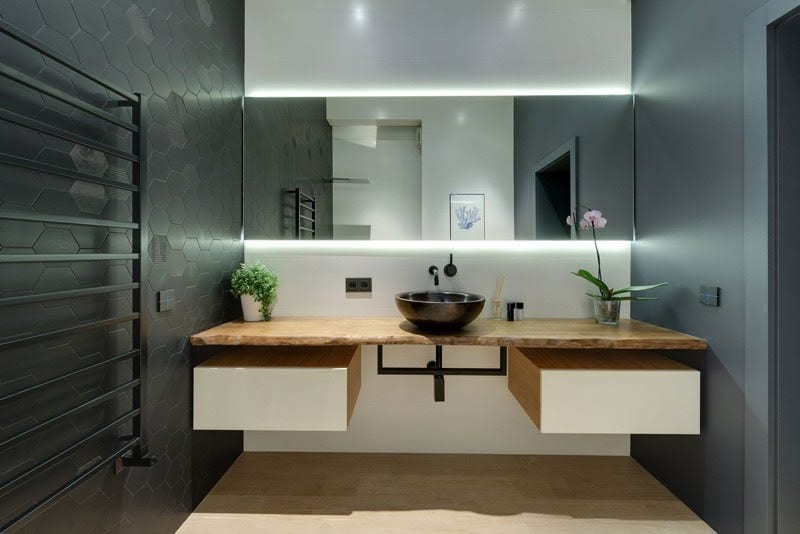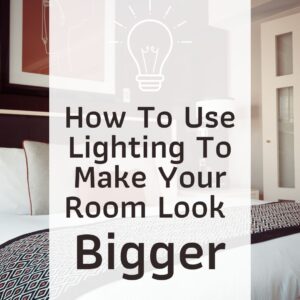
Lighting is an essential part of an interior’s functional design. Without proper lighting, even the most stylish rooms can feel dull, inadequate, and small. Lighting is also a necessity for modern homes. We use lighting to create livable homes where we could work, cook, and spend time with family without stubbing our toes in the dark.
But lighting doesn’t just brighten your home, lighting can also change how your environment feels and looks. In fact, when done right, lighting can make spaces look bigger or smaller. So how do you light your home in a way that it creates richer-looking big spaces? In this article, you’ll learn some of the subtle techniques on how to use lighting to make your space appear huge.
Use Layer Lighting
Credits: Photo by Francesca Tosolini
In the same way, you can layer textures to give depth and contrast to your design, you can also layer lighting to transform your room. Layering is a technique done by combining different kinds of lighting in an area. The idea is to use several different light sources in a room to divide the room.
With multiple light sources, you can use corners more efficiently, thus making your space appear larger. Light has a way of opening up spaces making nooks look more spacious and bright.
For example, in the bedroom, you should have several lights such as table light, wall light, in addition to the central overhead light. You’ll have task lighting to provide shadow-free work areas, accent lighting for creating interest, and decorative lighting for flair. Despite having multiple sources, make sure that the lights are all cohesive in design and placed in the right spot.
Tall Lamps
Photo by Francesca Tosolini
Tall floor lamps aren’t only stylish and fancy, they can also transform your room’s ambiance and size. The use of vertical and narrow furniture or in this case fixtures is a common interior design trick to utilize space. Tall and slim floor lamps will add height and elegance to your room whilst giving you enough floor space for your other furniture.
If you wish to brighten only a certain part of your room, tall lamps can also be the perfect solution. Tall lamps usually are around 4 feet to several feet in height are great for reading and must be placed near a reading area. Unlike overhead lights, lamps can give off a concentrated area of light to the space you want to illuminate. They can also transform dull corners and help you create stylish nooks around your home.
Tall lamps are best for homes with open spaces or limited floor space. Traditionally, floor lamps are placed beside a sofa, armchair, or a corner in your living room. Extra-tall lamps with bold styles can also be used as a statement piece in a room. You can place them beside a seating or desk area, or both.
Slender Pendant Lights
Photo by Reinaldo Kevin
Forget big and bulky chandeliers—if you want to make your apartment look spacious, choose slim and contemporary pendant lights. Pendant lights are light fixtures that hang down a ceiling on a chain or rod. They are called pendant lights because they look like pendants on a necklace.
Because of their versatility, pendant lights have become popular replacement for chandeliers. They’re also more versatile in terms of interior design and creating functional spaces. Long pendants can emphasize the height of the room and draw the eye upward. They can also spread brighter light around the room which is very essential for homes with small spaces. Pendant lights are also very good for task lighting. You can use them on desks, counters, and dining tables.
Today, mini pendant lights have become trendy solutions for homes with limited space. These tiny lights can give a sufficient amount of light whilst taking very little space. Since they’re also bright and mostly focused downwards, they fit most working spaces perfectly. Mini pendant lights also look great in bathrooms and kitchens.
Recessed Lighting
Photo by Shakirahome.co
Also known as canister or downlights, recessed lights are an energy-efficient type of light design wherein the bulb is installed in a hollow opening of a ceiling, wall, or floor. These kinds of lighting don’t take up so much space yet provide light to almost all corners of the room making them the perfect light option for small homes.
Since recessed lights are mostly hidden, you don’t have to worry about your light design going out of style. They are also great for streamlining the appearance of a room. Most recessed lights are used in offices, hallways, home theaters, and bathrooms.
The only drawback of using recessed lights is that they are permanent and aren’t flexible when it comes to positioning. This is also the reason why most recessed lights are placed in the ceiling than in the walls.
Backlighting
Photo by Ki Design Studio
Want a dose of futuristic and expensive style in your home? Try backlights. Backlighting is another technique you can do to create mood and the illusion of depth in your space. This form of light is known for its glowing effects and are more suited in modern and contemporary homes. Backlighting works like a spotlight by shifting the focus on the object in front of it and creating darkness around.
Backlighting can also be used for many design purposes. When fixed behind mirrors, televisions, and glass storages, backlighting can create a modern and sophisticated feel. If put behind portraits and decors, it can make the object stand out. For small homes, the best places to put backlighting are behind bathroom mirrors, cabinets, screens, displays, and alcoves.
Conclusion
You don’t have to spend a ton of money for a room remodel just to make your space look bigger. With the proper use of lighting and the techniques mentioned above, you can have the illusion of a bigger and brighter room no matter how small your home can be. Lighting effortlessly transforms your space and adds glamour to your room even if you have a limited budget to begin with.
